My Aussie husband, Chris, fell in love with Greece on our first trip there (my third) in 2005. From then on he has always been pestering me to go back again and again.
Chris did not really understand that being a ‘Skip’ and not being able to communicate much in Greek, beyond saying Kalimera and Geia Sou, ensured that he had the best of both worlds. He had all the benefits, without any of the responsibilities. For one thing he was afforded near godlike status by all the relatives. He was always fawned over by my aunties and cousins in Athens and Kalamata. He was always served first at the dinner table and given the biggest helpings.
He was allowed to go and watch TV in air conditioned comfort while I was required to stay up late at night spending endless hours on the hot balcony updating the family on every detail of life in Australia when all I wanted to do was lay my head down and go to sleep.
He was also blissfully unaware of the frustrations I had to endure negotiating the vagueries of the Greek transport system, buying bus and ferry tickets, bargaining for accommodation, dealing with unhelpful ticket sellers or bank tellers, not to mention queue jumping locals.
READ MORE: A seasoned traveller’s guide to the best Greek islands

Getting to the island
Anyway, by 2012, we were busy planning our fourth trip to Greece and the list of islands and places of interest we had already visited was growing steadily. Chris has always had a bit of an adventurous spirit and liked to find out of the way, quirky or remote places to go. So, he duly informed me that on this trip we were going to an island south of Crete called Gavdos.
Now, Gavdos, which I had never heard of before my visit, is actually the most southerly point of Europe. It is a dry, scrubby and sparsely inhabited dot in the Libyan Sea, part way to Africa. It is nothing if not remote but, once there, it has a magical presence all its own which seems to hold the traveller in its spell. Legend has it that Gavdos, ancient Ogygia, was the island where Odysseus fell under the enchantment of the nymph Calypso and was waylaid for years on his journey back to Ithaca after the Trojan war. Even today, it can seem very hard to muster the energy to pack up and leave when its time to move on.
Added to this is the possibility that the small ferry, the Daskalogiannis, which services Gavdos from Crete a few times a week, may not attempt the crossing if the sea is rough. If you’re on a tight schedule you might want to think twice before visiting Gavdos because when the weather is windy many a traveller has been known to panic about the chances of getting back. For this reason, many travellers have visited the island expecting to stay a night and end up staying a week. If you’re on a deadline you should quickly get into the habit of checking the forecast and wind velocity on the internet weather channel, then on the day of departure, you may spend anxious hours scanning the northern horizon for the first glimpse of the Daskologiannis ploughing its way southward from Crete through the choppy Libyan Sea. It always seems to be the big topic of conversation among hoteliers and tourists alike. Will it come or won’t it?
I clearly remember farewelling a middle-aged Belgian woman from the port. She was desperate to leave but the ferry hadn’t come for days. In her desperation, she and a couple of others had paid one of the local kids to make the rough 40-km crossing in a small rubber inflatable boat with an outboard motor on the back. My last memory of her was seeing her crouched under the front spray cover of the rubber ducky with spray crashing over her as they thudded at high speed across the choppy waves. She definitely took her life in her hands and I pray she made it back to Crete safely.
READ MORE: Insider’s guide to the two sides of Samos: Greek tourist paradise vs refugee ‘jungle’
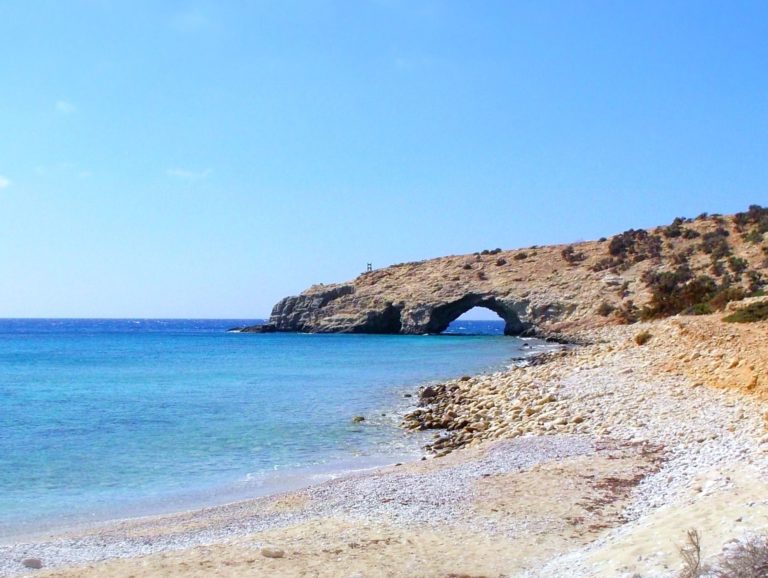
Things to do
Once on the island, Gavdos is a great place for hiking and exploring. There are heaps of walking trails, some well-defined, and others pretty obscure. Usually the hotel owners will drop you off and pick you up at the start of any trail for a small fee.
A great place to start is the trail which skirts the eastern side of the island starting at Karaves and finishing at the most southerly point of land on the European continent. It is a couple of hours walking with absolutely spectacular views of the Libyan Sea most of the way. At the end of the trail there lies the often deserted, pristine Trypiti beach and on the adjacent headland some inspired locals have constructed a giant wooden chair about three metres high which you can clamber up on and take the obligatory photo. On the day we walked the track the local priest’s wife had parked her four wheel drive at the half way point of the track and set up a stall selling tomato and feta toasties.
During the summer season the island is invaded by hundreds of mostly naked hippies, known as katsikia (goats) by the locals, who arrive on their annual pilgrimage from the zougla (jungle) of Athens and congregate on the spectacular and famous Agios Ioannis beach at the north western corner of the island. My husband’s eyes nearly popped out as we rounded the headland to this unexpected sight on one of our many explorations.
READ MORE: Postcard from Gavdos
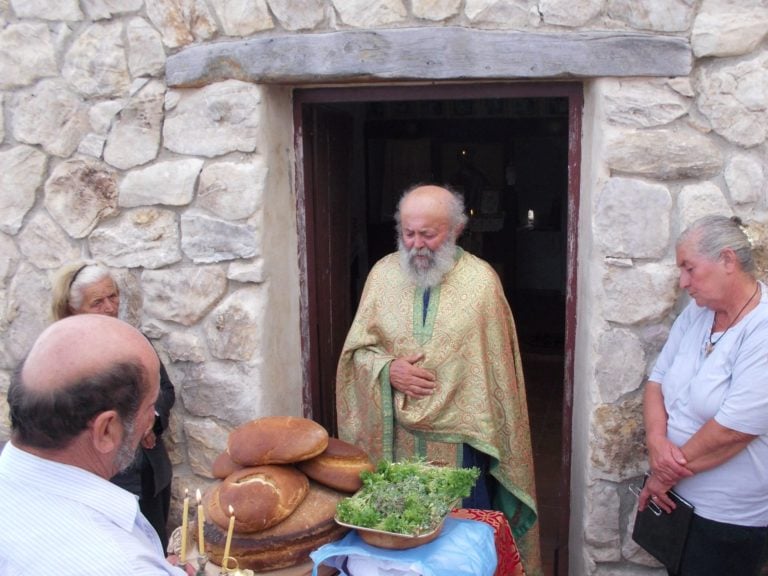
People watching
Gavdos is a place where you’re likely to rub shoulders with eccentric characters from all over the world. One of my favourites was a larger-than-life Athenian businessman, Yianni, who wanted to come and visit us in Australia, thinking it was only an hour’s flight (perhaps he had us mixed up with Austria). Always on the lookout for his next wife, he was also obsessed with papagalo (parrot) and was desperate to find out how he could buy a sulphur crested cockatoo from Australia. When I told him that the flight to Australia took 24 hours and that there was no way he was going to be able to export Australian wildlife to Europe, he was bitterly disappointed.
Another standout character was our mild-mannered friend and ‘Sherlock Holmes’ tragic Tim from Sussex, England. About 60 years old he had had an incredibly varied life living in many countries starting as a young soldier in the British Army during the Malayan Emergency and the Mau Mau uprising in Kenya.
Later he ‘talked’ his way into a university placement in Los Angeles and then went on to take a job as a meteorologist on Catalina Island off the California coast. He relayed many fascinating stories like the time during flying training he had run out of fuel and crash-landed in the Californian desert. But one of the most amazing tales was how he had been given a metal detector as a present and promptly found an ancient lead bucket full of Roman gold coins buried in his neigbour’s field in rural England.
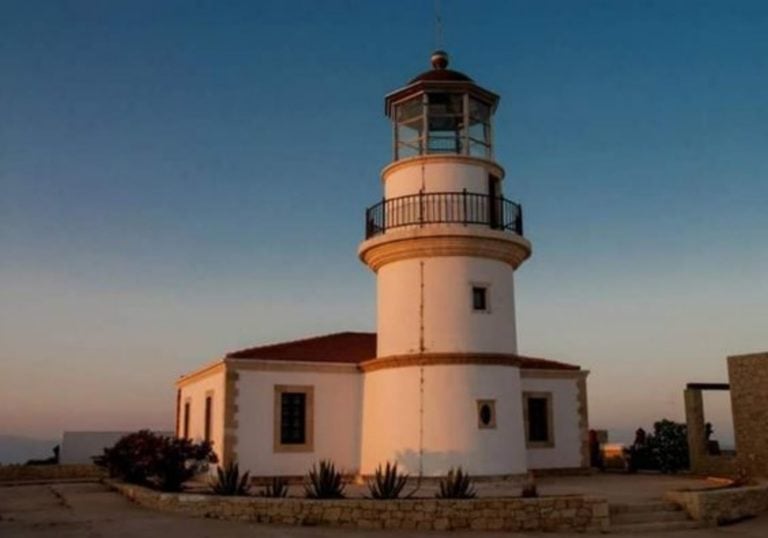
Then there was the lighthouse keeper on Gavdos. Actually, the lighthouse had been shut down a few years earlier and replaced by an automated beacon financed by EU money. But the old lighthouse was still there and had been turned into a museum and tourists would gather there every evening to watch the sun set over the western horizon of the Libyan Sea.
The Greek lighthouse keeper had wooed and married a much younger French tourist and she had stayed on and had a child. The remoteness and solitude of Gavdos must have been a long way from a life in France. What was amazing about him was that he looked just like the screen actor Kirk Douglas and Chris was totally fascinated by this doppelganger of the famous actor nattering away in Greek.
The main focus of Gavdos is the magnificent Sarakiniko Beach a short 5-minute drive from the limni (lake). This is a broad stretch of golden sand with a magnificent views across the sea to Crete’s white mountains on the horizon. Relaxing at Maria’s taverna on the beach at the eastern end of Sarakiniko, on a balmy afternoon, with a gentle warm breeze, sipping cool drinks under the shade of rustling tamarisk trees is the absolute definition of laid back. It was like a snapshot in time of pure bliss.

Maria was a beautiful host and we got to know her and her daughter over the couple of weeks we were on the island. Life on a Greek island can be harsh and unforgiving and Maria had known her share of tragedy. Many years ago, as a young wife with five small children, her husband, who was an local fisherman, set off one day in his small caique to sell his catch on the mainland. He was never heard of again, presumed drowned in the often treacherous waters between Gavdos and Crete.
Chris who was wanting a Greek souvenir, had become fascinated with the little wooden oil, vinegar, salt and pepper holders ubiquitous in every taverna in Greece, one day asked Maria where can you buy these things. She promptly went back into the kitchen and re-emerged with one wrapped us as a gift to remind us of her.
Natural beauty
At the opposite end of Sarakiniko beach perched on a rocky headland was a strange looking compound about an acre in size. It was basically a house surrounded a very high barbed wire fence. Since our hotel was set back a bit on a hill overlooking Sarakiniko we could see this place from the hotel’s main common room and we asked one of the regulars what it was. It turns out that it was used as a prison by the fascist government. They would lock numbers of suspected communists in there and leave them to live or die without any provisions. Our friend told us that the inmates only survived because sympathetic locals would secretly throw food over the high fence to keep them from starving. One of the inmates interned there had been Mikis Theodorakis, composer of the famous musical score of ‘Zorba the Greek’. It made us very sad to think that Greeks could be so cruel to their own countrymen.
READ MORE: Greek donkeys banned from carrying obese tourists
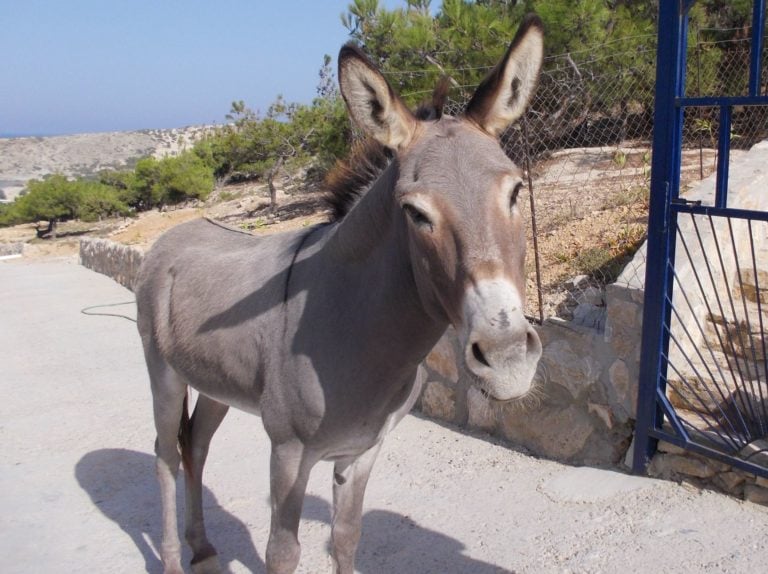
On the west side of the island, Diana Beach is a tiny sliver of sand that lies beneath the steep cliffs. Named after the late princess, it is the area she visited with her boyfriend Dodi Al-Fayed.
One thing that I mustn’t neglect to mention is the night sky. Sitting on the balcony of our rooms each night, looking across the water to Crete, the sky was so dark and the the stars so bright. I have never seen so many stars in my life. One night while marvelling at nature’s celestial show a shooting star came speeding through our atmosphere crashing into the sea midway between Gavdos and Crete. For a few seconds it lit up the whole panorama brighter than daylight and left us breathless.
In closing, I should really talk a little about getting to Gavdos. After the flight from Australia, we waited at Athens Airport for about 5 hours to catch the internal flight to Chania, Crete. Chania is a beautiful destination in its own right and well worth spending a couple of nights to rest and recuperate for the onward journey to the island. Nighttime around the old harbour is both a lovely visual and culinary experience. Also worth a day trip is the nearby ‘Zorba the Greek’ beach, about a half-hour bus trip from Chania, where you will immediately recognise the iconic mountain and beach where the logs flew down the zip line and Zorba and his English boss danced at the end of the famous film.
From the bus station at Chania it is a two-hour bus journey over the majestic white mountains culminating into a steep, winding descent to Chora Sfakion: the village where the final acts of the Battle of Crete were played out in the early days of World War 2 when thousands of allied troops, many of them Australian, were trapped in this natural amphi-theatre by superior German forces. Many escaped to North Africa under cover of dark by submarine or small naval ships, but many also died or were taken prisoner.
At the port of Chora Sfakion you meet the ferry Daskalogiannis for the 40km crossing to Gavdos. On a sunny still day it makes a glorious panorama as you look back at the majestic white mountains receding behind you and the low silhouette of Gavdos slowly growing on the southern horizon in front.
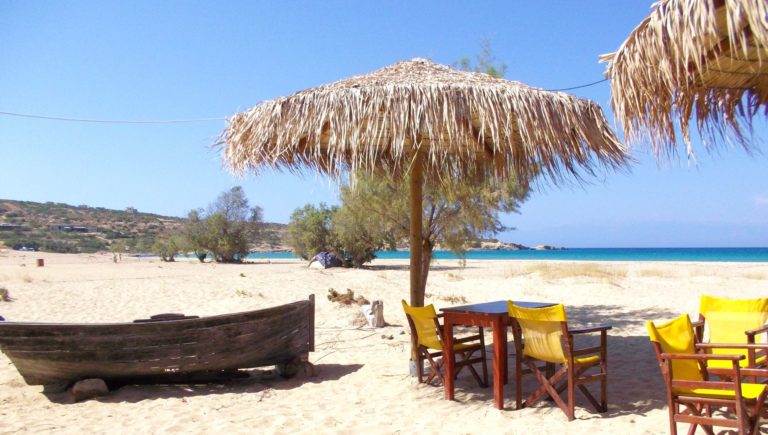
I hope this brief story will whet your appetite to travel to some of the lesser known corners of the beautiful country that is Greece and which my husband Chris now considers his second home.